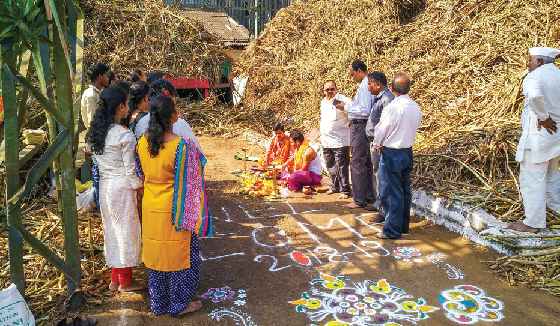
the goan I network
PONDA
With the permission from the Central Pollution Control Board (CPCB) in hand, the Sanjeevani Sahakar Sakhar Karkhana at Dharbandora wasted no time and began the sugarcane crushing season on Thursday morning, much to the delight of the sugarcane farmers.
On Wednesday, the CPCB had revoked its order and granted permission to the Karkhana to begin the crushing season, after the Karkhana installed the required systems.
The CPCB had earlier issued a closure order to the Karkhana for failing to install online continuous monitoring station for effluent and stack emissions.
Sanjeevani Sahakar Sakhar Karkhana staffer Sushant Gaonkar performed a puja to mark the occasion and the crushing season was later started.
‘Gomantak Us Utpadak Sanghatana’ President Rajendra Jivaji Desai told The Goan that the crushing season had begun with the rituals.
“However, there will be a formal function on Saturday,” he said, adding that ministers and MLAs are expected to attend this function.
Last year, the formal function to mark the beginning of the crushing season had taken place on November 14, but the actual crushing had begun after 18 days due to a breakdown in the machinery.
“I think we are late by just 7-8 days, as smooth functioning of the crushing season takes place in the first week of December. However, we will try and crush sugarcane smoothly within a shorter period,” Agriculture Officer Sadanand Sangodkar told The Goan.
Sangodkar said they would monitor the machinery
over the next 24 hours to check if they are functioning smoothly.
“Our only concern is regarding the old machinery which is in operation. You never know when a snag can take place. However, we take good care of the machinery by servicing them regularly,” he said.
“This year, sugarcane cultivation may drop due to less rain and we may need to bring gate cane from other states. We bring the cane mainly from Karnataka and about 5 per cent from Maharashtra.”
“Our cultivation mostly takes place at the foot of the western ghats, but this area is prone to the presence of wild animals and this is also one of the reasons for a drop in the crop,” Sangodkar added.